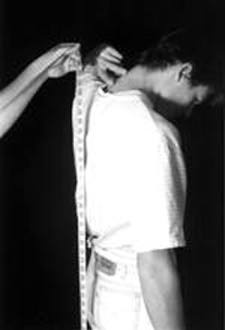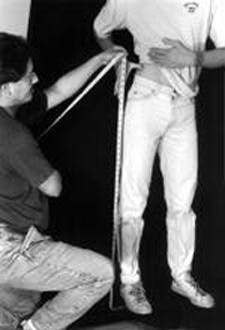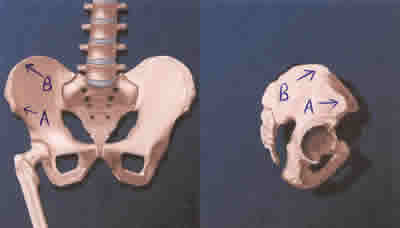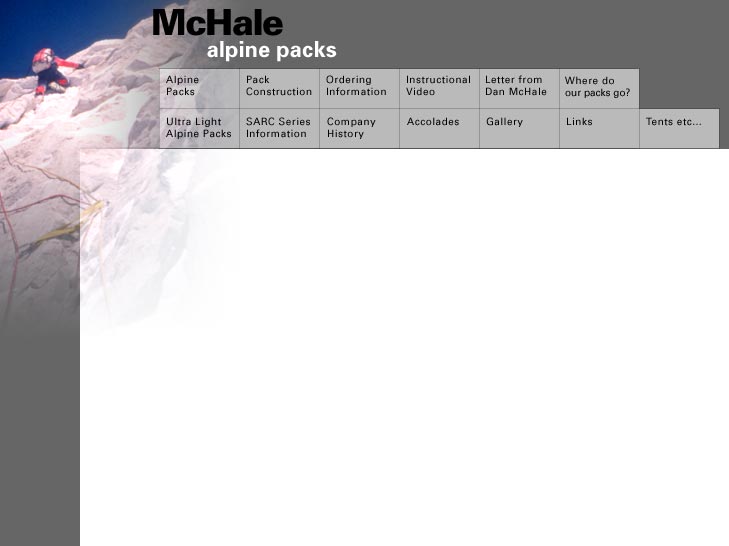|
Point 7C in general, is level with the top of the trapezius muscles - the area where the shoulder muscles intersect the neck - that is also an excellent reference point and the same height - please use this point. Although the photo does not show the measuring tape continuing to the floor - measure to the floor. Please scroll down to the next step and read the entire page before measuring.
Please scroll down
Consult at least one anatomy book or google 'illium' to see different views of the structure. The pelic drawing below, downloaded from the net with our marks added, shows the point A that people mistakingly measure as the Crest. Landmark #3: This is a new one for 2010. It helps us evaluate Demo photos. Measure the distance of the point of the elbow to the floor (just like the illiac crest measurement). Be sure not to lift the shoulder and keep shoulders level while the arms hang. The elbow is generally just above the illiac crest and is generally very near the top edge of hip belts when they are worn properly. This will help to verify accuracy of illiac measurements also. The illiac crest to floor measurements are generally the ones that are measured inaccurately and are too long - mostly because people measure front the front protrusion of the hip bone rather than from higher on the side closer to the elbow. (see below) Photo of elbow measurement soon! Point A (below) is the protruding point at the very front of the pelvis - the wrong spot to measure from. This point is forward but probably still considered the crest - which causes much confusion - but it can be almost 2" lower than the medial area of the crest that is higher and on the side of the body - at a wider spot of the pelvis. Dig into your pelvis and feel how the the ridge of bone climbs from point A upward and outward like a curving staircase to the area of the Crest that is below the ribcage. When our floor to crest measurement is measured to point A, the measurements are too short and this creates a higher number when that measurement is subtracted from the floor to top of shoulders measurement.
When men are overweight and have more than just a bit of a belly, a hipbelt cannot grab the upper part of the pelvis, and the pack MUST be worn lower. This would represent a compromised fit, and less hip loading performance from any brand pack can be expected with interference with leg lift movement and circulation. This is less of a problem for overweight women it seems. One of the greatest denials of the pack industry in the relationship between physical fitness and backpack performance and is one of the factors that drives the UL pack industry. Note: We regularly build packs that can be shortened for future anticipated weight loss. In general, the front hip bone A will be centered in the front of the hip belt, while the higher point or area B, will be at the top of the hip-belt for a person that is in good phyical fittness. Women in general tend to wear packs a bit higher but we still use the same measurement method. For less fit people, especially less fit men, the belts have to sit lower and this amount varies from individual to individual. In general, many people tend to wear their belts too low also - this being a result of a lack of understanding of how to adjust pack harnesses properly to get the packs up high. Then of course there is also a problem with many women that are fitted with packs that are too short because too many assumptions are made, and they then have to wear the packs way too high to keep the load off the shoulders. For women: Hip belts in general should go around the upper areas of the pelvis - not around the waist . Below: Do the math: It's easy math! It only looks complicated because we want to make it easy. Dan McHale at 6' tall has numbers like this: 62.5-45=17.5
In our shop, our tapes are taped to a length of flat metal so that one end can be held down by the foot. This frees the person doing the measuring to more accurately eyeball the points level with the landmarks. After all is said and done, your demo pack will do the real measuring of your body. The measurements are primarily for getting you a good fitting and adjustable demo pack that we use as the final basis for buiding a pack. It is actually the way a pack interacts with your unique physique that is looked at. These numbers are simply a guide to that end.
| ||||||||||||

 <--
The other landmark is medial area of the iliac crest. This is the
highest point on the pelvis that is midway between the front and rear
of the pelvis - and also the highest widest spot. You must dig in
and find the actual top of the crest. Do not measure from the pointy
protrusion on the front of the hip bone crest that is 2 inches lower!
Officially, that point is the protrusion at the top of the illiac
spine of the pelvis. The lower point would be in the area of the higher
pocket rivet on the model's Levis.
<--
The other landmark is medial area of the iliac crest. This is the
highest point on the pelvis that is midway between the front and rear
of the pelvis - and also the highest widest spot. You must dig in
and find the actual top of the crest. Do not measure from the pointy
protrusion on the front of the hip bone crest that is 2 inches lower!
Officially, that point is the protrusion at the top of the illiac
spine of the pelvis. The lower point would be in the area of the higher
pocket rivet on the model's Levis. 

